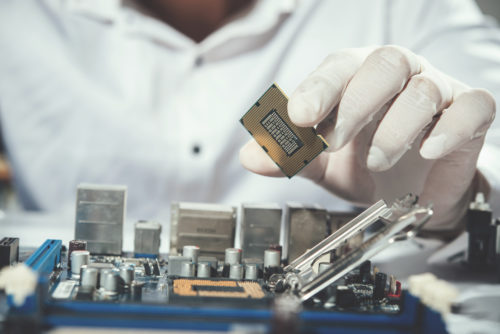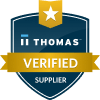
Fake Parts, Real Problems
The electronic component supply chain has been infiltrated by counterfeit parts. As a result of a massive influx in demand for components due to new innovations in technology, the problem continues to grow daily.
Counterfeit components in general are parts that are: recycled, remarked, overproduced, defective, cloned, tampered with, or have forged packaging/documentation. Fraudulent suppliers will try to pass low spec parts as parts with higher specs by altering or removing the part number or by changing the labels to appear as something else. They also often try to sell used parts while claiming that they are new.
The biggest concerns with faked components are the safety risks that could potentially be caused by them. This is especially true for the aerospace, medical, and transportation industries. The worst-case scenario is, for instance, if a component fails within a crucial instrument of an aircraft while in flight, it could ultimately lead to a crash.
Counterfeit parts can cause a horrible chain reaction for both manufacturers and end-users. Even if the part does not fail, it may still not perform up to the standard that it is supposed to, which can cause the device it is in to work slower and less efficiently. This will hurt customer trust in your product, and ultimately affect overall sales.
Identifying Counterfeit Parts
In some cases of identifying counterfeit components, you just need to know what to look for on the outside. The best place to start is with the packaging that the parts arrive in. Fraudulent sellers will often try to replicate an OCM’s (Original Component Manufacturer) label, but a closer look can reveal typos, incorrect information such as date codes or country of origin, differences in colors or fonts used, and incorrect logo size or placement.
Some counterfeiters will get lazy with the bar codes included on the labels, so it is important to have a means of making sure that the bar codes on your incoming parts are not just a random series of letters and digits. Workers who are checking in parts should also ensure that the packaging whether it be tubes or reels, is the correct size for the size of the components they are carrying.
The next step in the inspection process is a simple, yet important one: counting. Having accurate reel counters and scales is crucial for a warehouse team to be sure that they are receiving the correct amount of parts. This step is important to not only raise some red flags about something suspicious potentially going on with your shipment, but also the obvious billing concerns for short shipments.
.jpg) Connector being measured by a digital caliper.
Connector being measured by a digital caliper.
Once the count has been confirmed, it is time to take a more detailed look at your components. Micrometers and calipers are Instruments that are designed and calibrated for extreme accuracy in measuring the dimensions of minute objects. These tools can be used to check the dimensions of the parts in question against the specified measurements listed on the manufacturer’s data sheet which can be found online.
Next, the part should be placed under a magnifier, ideally a microscope, so that the inspector can take a close look at the surface of the component. Referring to the datasheets and diagrams of correct versions of the part, things like the part markings, pins, and leads should be checked for accuracy. Does this component normally have its markings stamped-on in ink, or should they be engraved? Are the markings consistent from unit to unit?
Swabbing the surface of a component with acetone can reveal whether or not a part has been re-marked or “blacktopped”. According to the SMTA (Surface Mount Technology Association), blacktopping is a process used to “coat the surface to cover the area that has been removed by sanding or other means before the new part number it applied. It covers the sanding marks and any residual part number that may still be visible on the part if the blacktopping was not applied.” If the swab comes up with black ink on it, the part numbers have been removed or affected, or scratches and damage become more apparent, then the part in question may have been re-marked.
What Else Can Be Done
In the event that there are some questions raised in the initial inspection process, the receiver may choose to send a sample lot to a third-party testing facility to get a definitive answer as to whether or not the components are authentic. They utilize devices and testing procedures such as X-ray inspections and decapsulation that may not be readily available in a standard warehouse’s inspection area.
Being aware that counterfeit components are out there, and having a procedure in place to identify them has become necessary for manufacturers and distributors. If your business is looking to buy components, but does not have a sufficient receiving/inspection process, then be sure that your supplier is quality certified and trustworthy. NetSource Technology, Inc. is an ISO 9001:2015 certified company that understands the risks associated with counterfeit parts. A rigorous, multilevel verification process is applied to every asset that comes through the warehouse. Give us a call or check out our website for more information today.
Sources:
- METHODS USED IN THE DETECTION OF COUNTERFEIT ELECTRONIC COMPONENTS
- Detection and Avoidance Measures of IC Counterfeits: A Survey
- Farewell to Counterfeit Electronic Components
- DEFENSE INDUSTRIAL BASE ASSESSMENT: COUNTERFEIT ELECTRONICS
- aaactl.com




